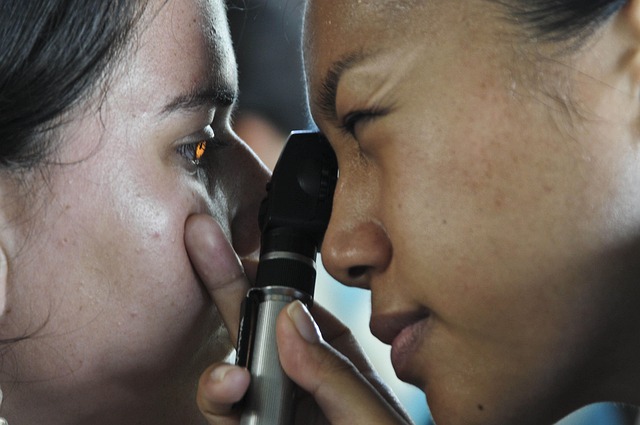Understanding Blood Sugar Levels and How to Manage Them
Managing blood sugar levels involves understanding how diet, activity, and lifestyle can influence your overall health. Learning about practical approaches, monitoring routines, and discussing options with a healthcare professional can help support daily well-being in a balanced way.
Blood sugar levels fluctuate naturally throughout the day in response to food intake, physical activity, stress, and hormonal changes. For most healthy adults, normal fasting blood sugar ranges from 70 to 99 mg/dL, while levels two hours after eating should remain below 140 mg/dL. When these levels consistently fall outside the normal range, it can signal underlying health concerns that require attention. Chronic high blood sugar, known as hyperglycemia, can lead to serious complications affecting the heart, kidneys, eyes, and nerves, while low blood sugar, or hypoglycemia, can cause immediate symptoms like dizziness, confusion, and fatigue.
Tips for Maintaining Healthy Blood Sugar
Maintaining healthy blood sugar involves a combination of mindful eating, regular monitoring, and consistent habits. One of the most effective strategies is eating balanced meals that combine complex carbohydrates with protein and healthy fats, which slows glucose absorption and prevents sharp spikes. Portion control plays a crucial role as well, since consuming large quantities of food at once can overwhelm your body’s ability to process glucose efficiently. Staying hydrated throughout the day supports kidney function and helps your body eliminate excess sugar through urine. Regular blood sugar monitoring, especially for those with diabetes or prediabetes, provides valuable feedback about how different foods and activities affect your levels. Additionally, managing stress through relaxation techniques like meditation, deep breathing, or yoga can help regulate cortisol levels, which directly impact blood sugar. Getting adequate sleep, typically seven to nine hours per night, is equally important since sleep deprivation can impair insulin sensitivity and glucose metabolism.
Lifestyle Changes for Blood Sugar Control
Implementing sustainable lifestyle changes creates the foundation for long-term blood sugar management. Regular physical activity stands out as one of the most powerful tools for improving insulin sensitivity and glucose uptake by muscles. Aim for at least 150 minutes of moderate-intensity exercise per week, such as brisk walking, swimming, or cycling, combined with resistance training twice weekly to build muscle mass that helps regulate blood sugar. Timing matters too: even a short walk after meals can significantly reduce post-meal glucose spikes. Weight management plays a critical role, as excess body fat, particularly around the abdomen, contributes to insulin resistance. Losing just five to ten percent of body weight can dramatically improve blood sugar control for those who are overweight. Quitting smoking is essential since tobacco use increases insulin resistance and raises the risk of diabetes complications. Limiting alcohol consumption helps as well, as alcoholic beverages can cause unpredictable blood sugar fluctuations. Creating a consistent daily routine for meals, exercise, and sleep helps your body maintain more stable glucose patterns. Social support from family, friends, or support groups can provide motivation and accountability as you work toward your health goals.
Diet Plans for Blood Sugar Control
Selecting the right dietary approach can make a substantial difference in managing blood sugar levels. The Mediterranean diet, rich in vegetables, fruits, whole grains, legumes, nuts, olive oil, and lean proteins like fish, has demonstrated significant benefits for blood sugar control and cardiovascular health. This eating pattern emphasizes fiber-rich foods that slow glucose absorption while providing essential nutrients. The DASH diet, originally designed for blood pressure management, also supports healthy blood sugar through its focus on whole foods, reduced sodium, and limited refined carbohydrates. Low-glycemic index eating involves choosing foods that cause gradual rather than rapid increases in blood sugar, such as steel-cut oats, sweet potatoes, and most non-starchy vegetables. Carbohydrate counting allows individuals, particularly those with diabetes, to match insulin doses to carbohydrate intake while maintaining flexibility in food choices. Plant-based diets have shown promise in improving insulin sensitivity and reducing diabetes risk, though careful planning ensures adequate protein and nutrient intake. Intermittent fasting approaches, such as time-restricted eating, may benefit some individuals by improving insulin sensitivity, though this strategy requires medical supervision for those taking glucose-lowering medications. Regardless of the specific plan chosen, consistency matters more than perfection. Working with a registered dietitian or certified diabetes educator can help you develop a personalized nutrition strategy that fits your preferences, lifestyle, and medical needs.
Monitoring and Understanding Your Numbers
Regular monitoring provides essential information about how well your blood sugar management strategies are working. Home glucose meters allow for convenient fingerstick testing at various times throughout the day, helping identify patterns and trends. Continuous glucose monitors (CGMs) offer even more detailed data by tracking glucose levels every few minutes, revealing how different foods, activities, and stressors affect your numbers in real time. The A1C test, performed by healthcare providers, measures your average blood sugar over the previous two to three months, providing a broader picture of long-term control. Understanding target ranges helps you interpret your results: for most adults with diabetes, fasting levels should fall between 80 and 130 mg/dL, while post-meal readings should stay below 180 mg/dL. However, targets may vary based on individual factors like age, pregnancy, and the presence of other health conditions. Keeping a log of your readings along with notes about meals, exercise, medications, and stress levels helps identify what influences your blood sugar most significantly. This information proves invaluable during medical appointments, enabling your healthcare team to make informed adjustments to your treatment plan.
When to Seek Professional Guidance
While lifestyle modifications form the cornerstone of blood sugar management, professional medical guidance remains essential for proper diagnosis, treatment, and monitoring. Schedule an appointment with your healthcare provider if you experience symptoms of high blood sugar such as increased thirst, frequent urination, blurred vision, or unexplained fatigue, or symptoms of low blood sugar including shakiness, sweating, rapid heartbeat, or confusion. Annual screening is recommended for adults over 45 or those with risk factors like obesity, family history of diabetes, or history of gestational diabetes. Healthcare providers can order appropriate tests, prescribe medications when necessary, and refer you to specialists such as endocrinologists, dietitians, or diabetes educators. Regular check-ups allow for monitoring of potential complications and adjustment of treatment plans as needed. Many communities offer diabetes education programs that provide group support and practical skills training. Taking an active role in your healthcare by asking questions, tracking your progress, and communicating openly with your medical team leads to better outcomes and improved quality of life.
This article is for informational purposes only and should not be considered medical advice. Please consult a qualified healthcare professional for personalized guidance and treatment.
Managing blood sugar levels effectively requires a comprehensive approach that combines nutrition, physical activity, stress management, adequate sleep, and regular monitoring. While the journey may seem challenging at first, small consistent changes accumulate into significant improvements over time. By understanding how different factors influence your glucose levels and implementing evidence-based strategies tailored to your individual needs, you can maintain healthy blood sugar and reduce the risk of complications. Remember that everyone’s body responds differently, so patience and persistence are key as you discover what works best for you.




